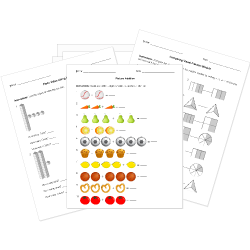Common Core Standard HSN-CN.B.5 Questions
(+) Represent addition, subtraction, multiplication, and conjugation of complex numbers geometrically on the complex plane; use properties of this representation for computation. For example, (-1 + √3 i)3 = 8 because (-1 + √3 i) has modulus 2 and argument 120°.
You can create printable tests and worksheets from these questions on Common Core standard HSN-CN.B.5! Select one or more questions using the checkboxes above each question. Then click the add selected questions to a test button before moving to another page.







